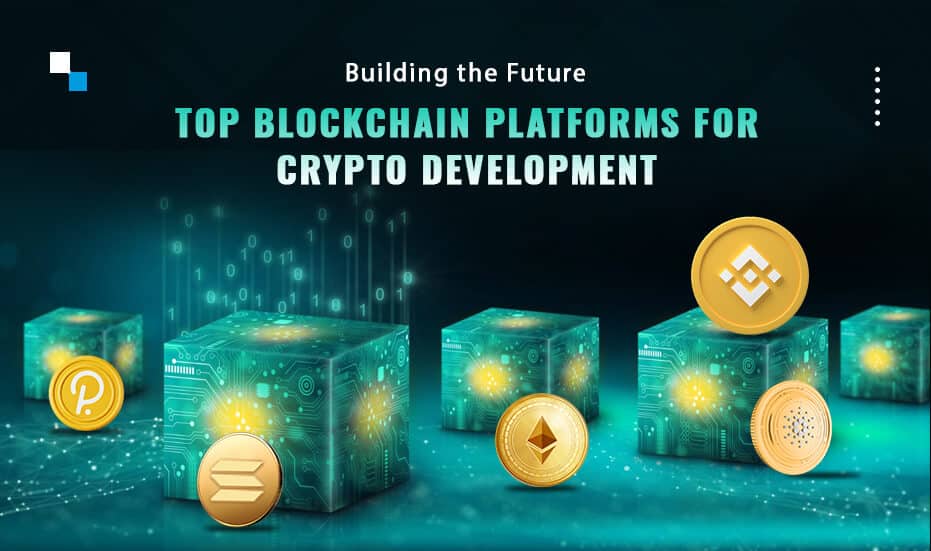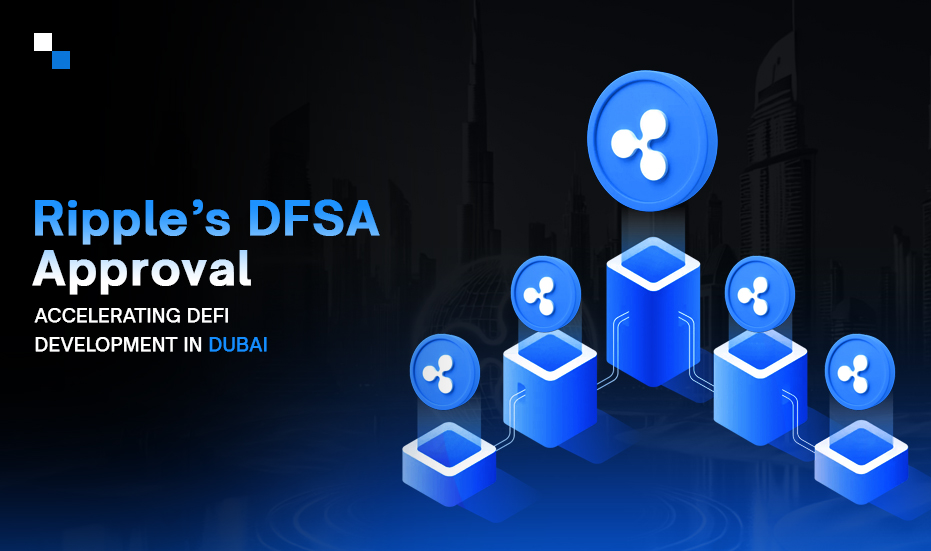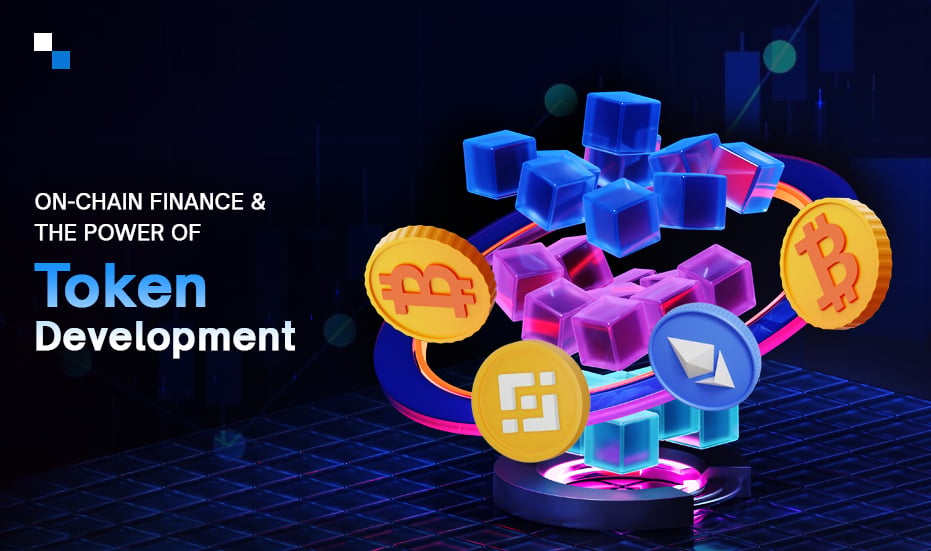The cryptocurrency market has witnessed tremendous growth in recent years, and blockchain technology lies at the heart of this revolution. Blockchain platforms provide the foundation for building and deploying innovative cryptocurrencies. As we step into 2023, it is crucial for developers and entrepreneurs to identify the best blockchain platforms available.
Let’s see what this tweet says about the best blockchain platforms:

In this article, we will explore the top blockchain platforms that are leading the way in crypto development. These platforms offer a range of features and functionalities, enabling developers to create secure, scalable, and decentralized digital currencies.
1. Ethereum
When discussing blockchain platforms for cryptocurrency development, it is impossible to overlook Ethereum. As the first and most popular smart contract platform, Ethereum has played a pivotal role in the proliferation of cryptocurrencies, and any cryptocurrency development company would like to develop cryptocurrency on this particular blockchain due to diverse reasons. Ethereum’s solidity programming language and Ethereum Virtual Machine (EVM) provide a robust framework for developers to create decentralized applications (dApps) and tokens.
Ethereum is considered highly suitable for cryptocurrency development due to several key reasons:
- Smart Contract Functionality: Ethereum introduced the concept of smart contracts, which are self-executing agreements with predefined conditions written directly into the code. Smart contracts enable the creation of decentralized applications (dApps) and allow developers to program complex logic for cryptocurrencies, including token issuance, distribution, and governance. A crypto development company having expertise in Ethereum’s solidity programming language and Ethereum Virtual Machine (EVM) can provide a robust framework for developing and executing smart contracts.
- Established Ecosystem: Ethereum has the advantage of being the first blockchain platform to gain widespread adoption and create a thriving developer community. This has resulted in a rich ecosystem of tools, resources, and libraries that make it easier for developers to build on Ethereum. The availability of a wide range of wallets, development frameworks, and third-party integrations simplifies the process of creating and deploying cryptocurrencies on the platform.
- Network Effect: Ethereum’s strong network effect is a significant advantage for cryptocurrency development. The platform has a large user base, an active community, and a well-established infrastructure that includes exchanges, wallets, and decentralized applications. This network effect enhances the visibility, liquidity, and market potential of cryptocurrencies built on Ethereum. A cryptocurrency development company can tap into this existing user base and leverage the platform’s popularity to gain traction for their projects.
- Interoperability: Ethereum’s open standards and compatibility with other blockchain platforms contribute to its suitability for cryptocurrency development. Ethereum-based tokens, such as ERC-20, ERC-721, and ERC-1155, have become widely adopted industry standards, enabling seamless interoperability between different projects and platforms. This interoperability facilitates the integration and exchange of tokens, enhancing the overall utility and liquidity of cryptocurrencies built on Ethereum.
- Recent Ethereum 2.0 Upgrade: Ethereum has undergone a significant upgrade known as Ethereum 2.0, which aims to address the scalability and energy efficiency challenges of the current Ethereum network. The transition from a proof-of-work (PoW) to a proof-of-stake (PoS) consensus mechanism is expected to significantly increase transaction throughput and reduce transaction costs. This upgrade provides even greater scalability and efficiency for crypto development on the Ethereum platform.
Ready To Build A New Cryptocurrency? Choose the blockchain platform of your choice
Schedule Free Demo2. Binance Smart Chain (BSC)
Binance Smart Chain, launched by the cryptocurrency exchange Binance, has emerged as a strong contender in the blockchain platform space. BSC is compatible with the Ethereum Virtual Machine, making it easy for Ethereum developers to port their projects to BSC. One of BSC’s main advantages is its low transaction fees, which provide a cost-effective alternative for developers and users.
Binance Smart Chain (BSC) has gained popularity as a blockchain platform, and any crypto development company will like to choose it for the following reasons:
- Ethereum Compatibility: BSC is fully compatible with the Ethereum Virtual Machine (EVM), meaning that developers can easily port their Ethereum-based projects to BSC without significant modifications. This compatibility allows developers to leverage their existing knowledge of Ethereum’s programming languages, tools, and frameworks, making it a smooth transition for Ethereum developers to start building on BSC.
- Low Transaction Fees: One of the standout features of BSC is its low transaction fees compared to Ethereum. Ethereum’s network congestion and high gas fees have become a concern for developers and users, especially for projects that involve frequent transactions or microtransactions. BSC offers an alternative with significantly lower transaction fees, making it an attractive choice for cost-conscious developers and users.
- Binance Ecosystem Integration: BSC is integrated with the larger Binance ecosystem, which includes the Binance exchange, Binance DEX, and other Binance-owned platforms and services. This integration provides BSC projects with easy access to a vast user base, liquidity, and potential for a token listing on Binance Exchange, which is one of the largest and most well-known cryptocurrency exchanges globally. The Binance ecosystem also offers additional resources and support, making it easier for developers to promote and grow their projects.
- Fast Transaction Confirmation: BSC utilizes a delegated proof-of-stake (DPoS) consensus mechanism, allowing for faster block confirmation times than Ethereum’s proof-of-work (PoW) consensus. This results in quicker transaction finality, enabling faster and more responsive decentralized applications on the BSC platform.
- Decentralized Finance (DeFi) and Yield Farming: BSC has seen significant growth in the decentralized finance sector, with numerous DeFi protocols and yield farming opportunities available on the platform. The popularity of BSC for DeFi projects is partly due to its low transaction fees and faster transaction confirmations, making it more feasible for users to participate in various DeFi activities such as trading, lending, and yield farming.
3. Solana
Solana is gaining significant attention in 2023 due to its impressive scalability and high transaction throughput. Solana’s unique approach to consensus, known as Proof of History (PoH), allows for blazing-fast transaction speeds and significantly reduces transaction fees. This scalability makes Solana an attractive choice for projects with high transaction volumes.
Solana has gained significant attention in the cryptocurrency development space due to its suitability for various reasons:
- Scalability and High Throughput: Solana is designed to address one of the biggest challenges faced by many blockchain platforms: scalability. Solana employs a unique combination of technologies, including Proof of History (PoH), Tower BFT (Byzantine Fault Tolerance), and a decentralized clock, which allows it to process a high number of transactions per second. Solana’s architecture enables it to handle thousands of transactions per second, making it highly suitable for crypto development projects that require fast and scalable transaction processing.
- Low Transaction Costs: Solana’s scalability is complemented by its low transaction costs. Unlike some other blockchain platforms where transaction fees can become prohibitively expensive during peak network usage, Solana aims to keep transaction fees low, making it more accessible for developers and users. This affordability is particularly advantageous for projects involving frequent transactions, such as decentralized exchanges (DEXs), high-frequency trading, and micropayments.
- Developer-Friendly Environment: Solana provides developers with a user-friendly development environment, making it easier to build on the platform. Solana’s development toolkit includes Solana Studio, a web-based integrated development environment (IDE), and Solana Command Line Interface (CLI) tools, simplifying the process of deploying smart contracts and interacting with the Solana network. Additionally, Solana supports programming languages like Rust, which is known for its safety, performance, and efficiency, making it attractive to developers seeking a powerful and secure development experience.
- Growing Ecosystem: Solana has experienced significant growth in its ecosystem, attracting a wide range of projects and developers across various sectors, including decentralized finance (DeFi), non-fungible tokens (NFTs), gaming, and more. This growing ecosystem provides developers with opportunities for collaboration, integration, and cross-platform interactions. The availability of diverse projects and services within the Solana ecosystem enhances the utility and potential adoption of cryptocurrencies built on the platform.
- Interoperability: Solana is designed to be interoperable with other blockchains, allowing for seamless integration and data transfer between different networks. Solana’s compatibility with Ethereum’s Web3.js and Ethereum Virtual Machine (EVM) ensures easy migration of Ethereum projects to Solana and facilitates interoperability between Solana and Ethereum-based applications. This interoperability opens up possibilities for cross-chain collaborations and enables developers to leverage the strengths of multiple blockchain platforms.
4. Polkadot
Polkadot is a next-generation blockchain platform that focuses on interoperability and scalability. By utilizing its relay chain and parachain architecture, Polkadot enables multiple blockchains to interoperate, fostering a connected and scalable ecosystem. This interoperability allows for the seamless transfer of assets and data across different chains, promoting cross-chain compatibility.
Polkadot offers several features that make it a suitable platform that can be chosen by a seasoned cryptocurrency development company:
- Interoperability: Interoperability is a key focus of Polkadot’s design. It enables different blockchains, known as parachains, to connect and communicate with each other. This interoperability allows for the seamless transfer of assets and data between different chains, promoting cross-chain compatibility. This feature is particularly useful for cryptocurrency development as it facilitates integration with other blockchain platforms, expands the reach and utility of cryptocurrencies, and fosters a connected and collaborative ecosystem.
- Scalability and Customizability: Polkadot’s architecture is designed to address scalability challenges. By utilizing a relay chain and parachain model, Polkadot can process multiple transactions simultaneously, significantly increasing transaction throughput. Furthermore, Polkadot allows developers to create customized blockchains using its Substrate framework. This flexibility enables crypto development experts to tailor their blockchains to specific requirements, including consensus mechanisms, governance models, and features, making it suitable for diverse cryptocurrency development projects.
- Governance and Upgradability: Polkadot incorporates an innovative governance model that allows for upgrades and changes without requiring hard forks. Through on-chain governance, token holders have the power to propose and vote on upgrades, enabling the platform to adapt and evolve over time. This governance framework provides developers with the flexibility to make improvements, introduce new features, and address any issues in a decentralized manner. The ability to upgrade and evolve the platform ensures that developers can keep their cryptocurrency projects up to date with the latest advancements and user needs.
- Security and Reliability: Polkadot emphasizes security and reliability through its robust consensus mechanism. The platform employs a nominated proof-of-stake (NPoS) consensus, which combines the efficiency of proof-of-stake with added security measures. Validators are selected based on their reputation, stake, and community support, ensuring a reliable and secure network. This focus on security is essential for cryptocurrency development as it provides confidence in the integrity of transactions, smart contracts, and token transfers.
- Growing Ecosystem and Partnerships: Polkadot has witnessed a growing ecosystem of projects and developers building on its platform. This diverse ecosystem spans various sectors, including DeFi, NFTs, and cross-chain applications. The availability of multiple projects and partnerships within the Polkadot ecosystem offers developers opportunities for collaboration, integration, and interoperability. The platform’s growing community and active developer base contribute to the vibrancy and potential adoption of cryptocurrencies developed on Polkadot.
Get Obligation Free Quote
[widget id=”custom_html-3″]
5. Cardano
Cardano’s scientific approach, scalability, sustainability, PoS consensus, emphasis on security, governance model, and expanding ecosystem make it a suitable platform that can be considered by a crypto development company for the creation of a new cryptocurrency. Its focus on peer-reviewed research, formal verification, and community involvement ensures a secure, efficient, and reliable environment for developers to build innovative and robust cryptocurrencies.
Cardano is considered a suitable platform for crypto development due to several key factors:
- Scientific Approach and Peer-Reviewed Research: Cardano sets itself apart by adopting a scientific and research-driven approach to blockchain development. The platform’s protocols and innovations are rigorously peer-reviewed by academic experts before implementation. This commitment to scientific research ensures a strong foundation for cryptocurrency development, with a focus on security, scalability, and sustainability.
- Scalability and Sustainability: Cardano aims to address scalability and sustainability challenges by utilizing a layered architecture. Its primary layer, the settlement layer (Cardano’s native cryptocurrency, ADA), focuses on financial transactions and security, while the computation layer (Plutus) facilitates smart contract execution. This separation allows for scalability improvements while ensuring security and minimizing the energy consumption associated with cryptocurrency transactions.
- Proof-of-Stake Consensus: Cardano employs a proof-of-stake (PoS) consensus mechanism called Ouroboros, which is designed to be secure, efficient, and environmentally friendly. PoS consensus allows ADA holders to participate in the network’s block validation process, reducing the reliance on energy-intensive mining activities. This approach offers benefits such as faster transaction confirmations and a reduced carbon footprint compared to proof-of-work (PoW) systems like Bitcoin.
- Formal Verification and Enhanced Security: Cardano places a strong emphasis on formal verification, a mathematical method used to rigorously analyze and verify the correctness of smart contracts and protocols. This approach helps identify and mitigate potential vulnerabilities and bugs before deployment, significantly enhancing the security and reliability of applications built on the platform. Formal verification reduces the risk of smart contract exploits, hacks, and other security breaches, making Cardano a suitable choice for secure crypto development.
- Governance and Decentralization: Cardano includes a sophisticated on-chain governance system that enables ADA holders to participate in the decision-making process regarding protocol upgrades and improvements. The governance model ensures community involvement and decentralization, allowing stakeholders to propose and vote on changes. This democratic approach fosters transparency, accountability, and adaptability, and ensures that the platform can evolve and meet the evolving needs of its users.
- Growing Ecosystem and Partnerships: Cardano has been actively building its ecosystem and establishing partnerships with various organizations, governments, and academic institutions. These partnerships provide opportunities for collaboration, research, and adoption of Cardano’s technology. The growing ecosystem, combined with ongoing development efforts, contributes to the platform’s potential for cryptocurrency development and adoption.
Conclusion
As the cryptocurrency market continues to evolve, selecting the right blockchain platform for crypto development becomes crucial. Ethereum, as the market leader, offers a mature ecosystem, smart contract capabilities, and widespread adoption. Binance Smart Chain’s low fees and Binance integration make it an attractive option for cost-conscious developers. Solana’s scalability and transaction speed make it an excellent choice for high-throughput applications. Polkadot’s focus on interoperability and customizable blockchains provides flexibility for developers seeking a connection. Cardano is another blockchain that is secure and scalable and can be used for developing cryptocurrencies in the current scenario.
Feeling curious to consult a cryptocurrency development company that can help take a stride in the cryptosphere? Why not visit Antier, the world-famous blockchain specialist? Connect today!





